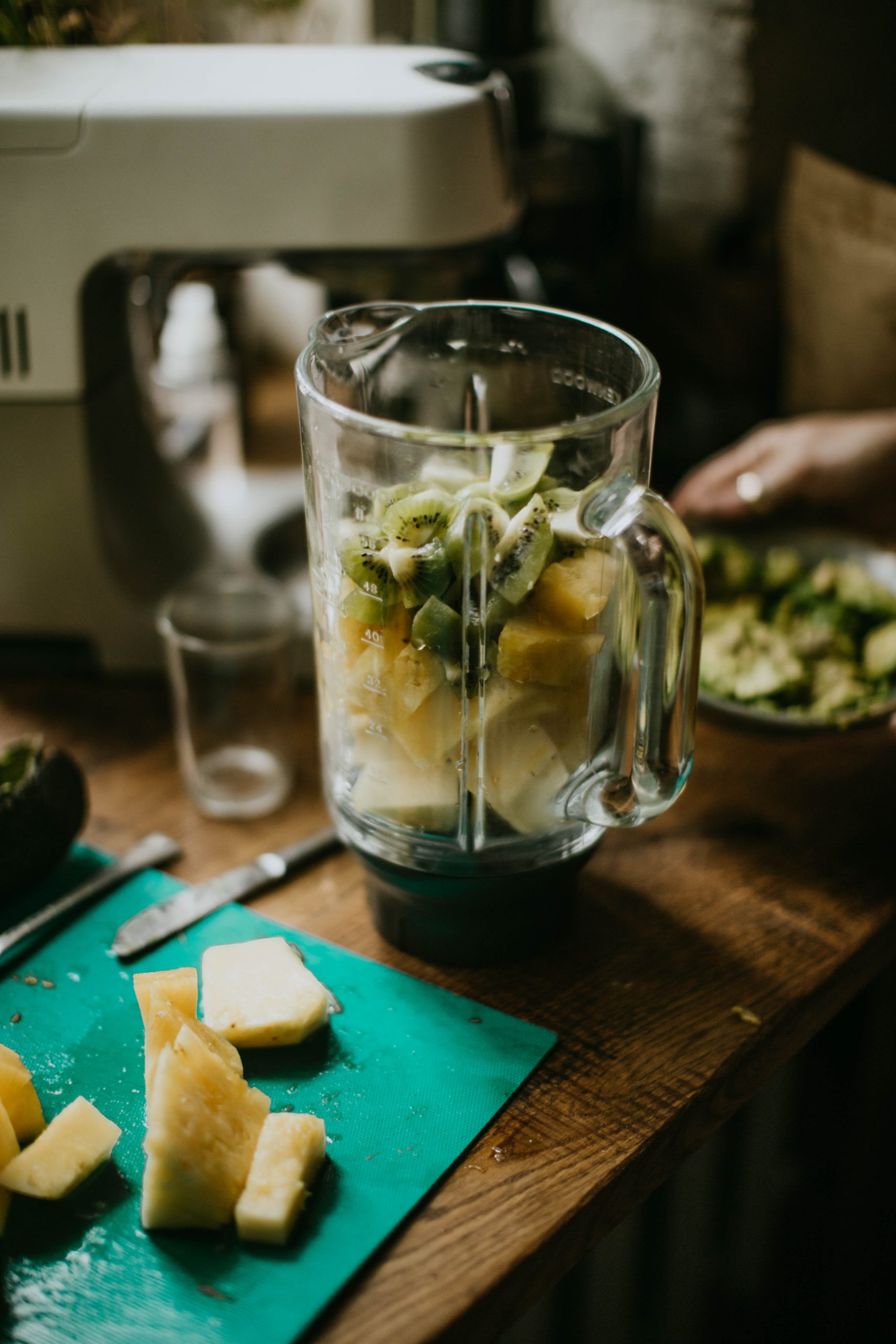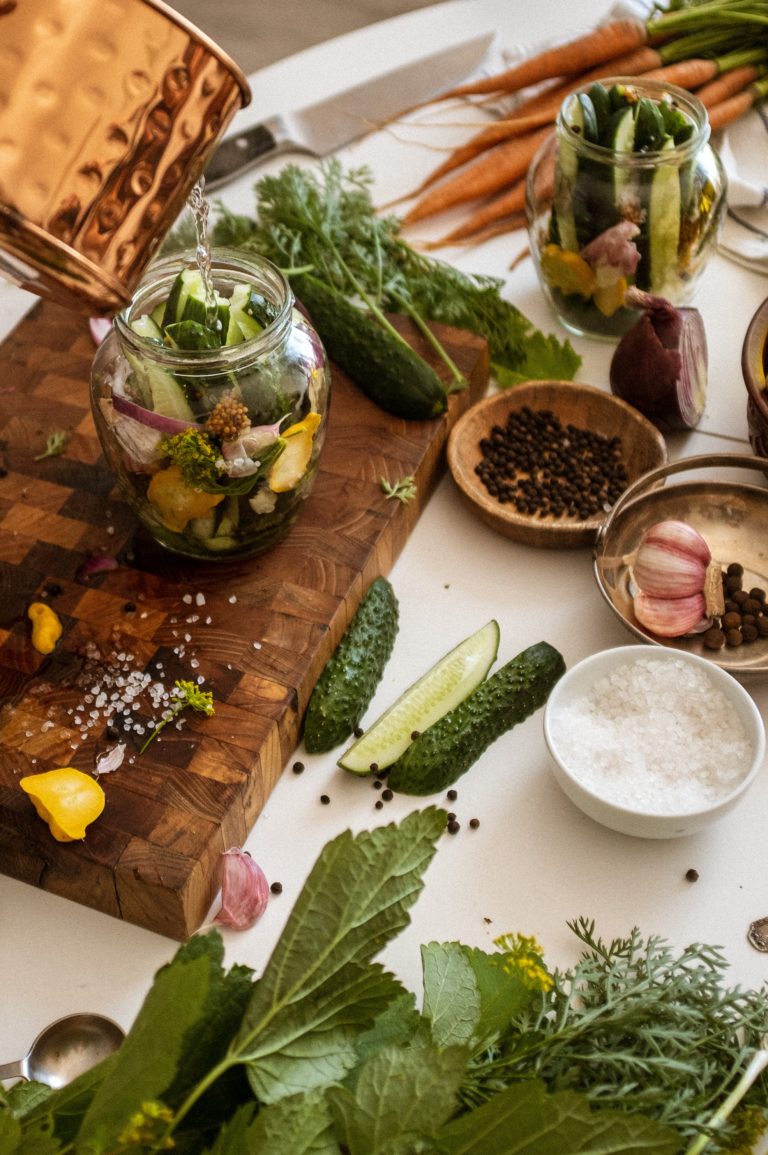Healthy drinks
Green smoothies provide a quick vitamin boost and are refreshing on hot summer days.
Green smoothies: preparation tips and recipes
Vital, healthy, refreshing: thanks to a good portion of vitamins, minerals and phytochemicals, green smoothies are real power drinks. Below are many tips regarding vegetables, blenders, preparation and recipes.
What is a green smoothie made up of? It contains green vegetables such as rocket, spinach, garden herbs (parsley, basil, etc.), kale or celery. The formula commonly used is: 60 percent vegetables + 40 percent fruit + some water = green smoothie.
I enjoy making smoothies on busy days as they are quick to make and highly nutritious. I pick fresh spinach or kale from the garden during the winter and spring and freeze any excess that I have for times when it’s too hot here for it to grow. I also prefer to ditch the ice and use frozen fruit in my smoothies instead. There is always a supply in my freezer. For bananas make sure to peal them first and put them in pieces in a zip lock bag. Same goes for pineapple and mango.

The smoothie should consist of at least 40 percent vegetables. Experienced green smoothie drinkers can also try 50 or even 60 percent, however, the taste is then somewhat bitter. The most important factor is for the selected type of fruit to be ripe. The sweeter the fruit, the more digestible and delicious the smoothie is. Lemon juice, dried fruit, ginger, honey or agave syrup provide the missing acidity, sweetness or spiciness – according to your taste. The serving size is approximately 250 ml.
Green leaves are bursting with a wide variety of vitamins and minerals, which above all strengthen our immune system. It contains dietary fibers that support the development of a healthy intestinal flora and are a plus for good digestion. The green chlorophyll promotes cell structure. Trace elements and secondary plant substances push our performance.
Simple green smoothie formula (1 smoothie)
1.5 cups of Fruit
Apples, pineapple, avocado, bananas, pears, grapefruit, blueberries, raspberries, kiwi, mango, oranges, passion fruit
1 cup of Vegetables
Kohlrabi, beetroot, celery, leaves of radish, lettuce such as arugula, lettuce and lamb’s lettuce; spinach, chard, celery, kale, bok choy
1 cup of Liquids
Plant based milks, coconut water, water
Herbs & Special Ingredients:
Basil, dandelion, cress, mint parsley, chives, thyme, chia seeds, dates, goji berries, honey, coconut water, turmeric, linseed oil, ginger, vanilla, cinnamon, lemon juice
How To Prepare The Ingredients
Apples and pears I core and chop up with the skin left on as it is the most nutrient-rich part of the fruit. The skin or peel of fruits and vegetables is generally higher in antioxidants, fiber, vitamins and minerals than the flesh component. I like to freeze my peeled bananas in pieces, that will save me from using ice cubes which will just make the smoothies watery. That said I will always have at least one frozen ingredient for my green smoothies. Spinach, kale or chard I like to use fresh while it’s in season. I grow the vegetables myself and have fresh produce during the winter and spring here in Spain. I freeze any excess greens and use them in the off season.
How To Prepare Smoothies In A Blender
A good quality blender can have up to 30,000 revolutions per minute and can completely break open the cell walls of lettuce, spinach and is able to perfectly chop hard vegetables such as celery, nuts and frozen fruit and process them into a creamy puree. However, it’s not necessary to invest in fancy equipment if you only make the occasional green smoothie. Bear in mind though that if you use a low or average powered blender regularly, the device could eventually overheat. They are not powerful enough for greens in the long run due to the strong plant fibers. The following paragraph will explain how to make green smoothies in a regular blender.

Prepare and blend the ingredients:
Thoroughly wash the fruit and vegetables and chop them up roughly. Incorporate the whole fruit as the peel is the most nutrient-dense part. Obviously small fruit such as berries can be thrown in whole.
Add the liquids first together with the green vegetables to break up the tough fibers. Use the pulse button to get the ingredients mixed if you are using a low-powered blender. Next add the fruit and special ingredients such as linseed oil, cinnamon, ginger or lemon juice. If it turns out too dense, more liquid can be added afterwards.

Favourite green smoothie recipes
All recipes are for 1 portion
When European explorers came across the pineapple in South America in the 17th century, they called it a pineapple because of its pinecone appearance.
Pineapple is high in vitamin C, which helps your immune system — the body’s defense against germs — keep you healthy. It also has: Vitamins A, B6, E, and K, Calcium, Folate, Iron, Magnesium, Phosphorus, Potassium and Zinc.
Oranges are rich in antioxidants and anti-inflammatory properties and can keep your health on the right track. Citrus fruits are a terrific source of vitamin C, but oranges (with a medium-size orange coming in at about 62 calories) also provide a number of other protective nutrients. It can boost immunity, controls blood sugar levels and can keep blood pressure in control. Oranges also provide gut- and health-protective fiber.
Kale is a hardy, leafy green that is part of the Brassica family. it has a slight bitter taste and is often cooked because of its fibrous leaves. However, it makes a great raw salad or smoothie with the right preparation. Kale is packed with multiple types of beneficial antioxidants. These antioxidants in kale are substances that counteract cell damage caused by unwanted toxins. In addition to antioxidants, kale is an excellent source of Vitamin C. A cup of raw kale contains even more vitamin C than a whole orange.
Throwing an apple on top may promote oral health, maintain cardiovascular health, improve respiratory health, fight cancerous cells, prevent osteoporosis, help keep gut healthy, maintain neurological health, boost energy level, enhance skin conditions, prevent premature aging, control body weight, work as a detoxifier and prevent cataracts.
Many berries are classified as “superfoods,” and for good reason. They pack a lot of nutritional power into a tiny package.
Berries are low in calories meaning you can load up on them without packing on the pounds. Vibrant, brightly coloured fruits and vegetables provide some of the highest levels of nutrients, especially antioxidants. These antioxidants have anti-inflammatory properties, which may help protect your body from disease as you age
Native to many parts of the world, the strawberry belongs to the rose family and has a distinct aroma. Despite its name, a strawberry is not a berry from a botanical standpoint.
Strawberries are seasonal fruits that grow in bushes. There are three types of strawberries which are: June-bearing strawberries, Everbearing strawberries, Day-neutral strawberry variety.
Spinach (Spinacia oleracea) is a leafy green vegetable that is believed to be from Persia. It belongs to the amaranth family and is related to beets and quinoa. Spinach is an extremely nutrient-rich vegetable. It contains large amounts of vitamin C, carotenoids, vitamin K, folic acid, iron, and calcium.
Cucumbers belong to the same plant family as squash, pumpkin, and watermelon (the Cucurbitaceae family). Like watermelon, cucumbers are made up of mostly (95 percent) water, which means eating them on a hot summer day can help you stay hydrated.
However, there’s reason to eat cucumbers all year long. With vitamin K, B vitamins, copper, potassium, vitamin C, and manganese, cucumbers can help you to avoid nutrient deficiencies. All these are excellent reasons to add them into smoothies.
The matcha green tea smoothie is a really easy and quick smoothie to prepare. Thanks to the matcha powder, it has the fantastic taste of green tea with a hint of banana. You might wonder if you can make a green tea smoothie without matcha, Matcha is a specific type of Green tea produced in Japan according to strict cultivation and harvest techniques. If it’s not matcha but a green tea powder, then it’s generally bitter and unpalatable. Therefore a good quality matcha brand is recommended for a tasty experience.
